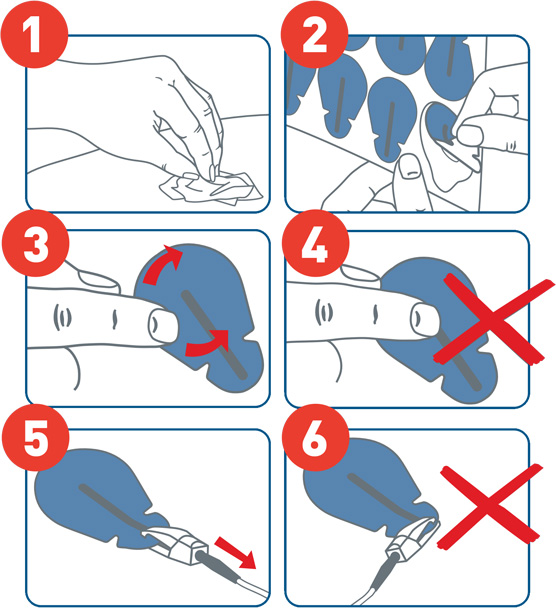ECG Electrode Application Guide

The correct selection and application of ECG electrodes can help to prevent many of the problems associated with poor skin contact when taking an ECG.
Ambu BlueSensor ECG electrodes have been in use for over forty years, and the combination of wet gel and superior quick adhesion provides optimal signal quality during ECG machine monitoring.
We've partnered with Ambu to create a ECG Electrode Application Guide to help you when applying Ambu ECG electrodes, specifically those with a wet gel. It will ensure you get the best possible application of your electrodes and reduce the problems associated with poor skin contact:
Download Our Ambu Blue Sensor ECG Electrodes Guide
Application of Ambu Blue Sensor ECG Electrodes

-
Clean and dry the skin - Proper skin preparation is crucial for accurate ECG readings. Begin by cleaning the electrode sites with mild soap and water to remove oils, lotions, or perspiration, which can impede electrode adhesion and signal transmission. After cleaning, thoroughly dry the skin. Avoid using alcohol-based cleansers, as they can dry out the skin and increase impedance, potentially leading to artifacts in the ECG trace.
-
Peel electrode from the plastic liner - Carefully remove the electrode from its backing to prevent contamination or damage to the adhesive surface. Handle the electrode by its edges to maintain the integrity of the conductive gel. This ensures optimal adhesion and signal conduction when applied to the skin.
-
Place the electrode on the skin - Position the electrode on the prepared site and press around the adhesive perimeter using a circular motion. This technique helps to secure the electrode firmly to the skin, ensuring consistent contact and reducing the likelihood of motion artifacts during ECG recording. For electrodes containing wet gel, it's important to avoid applying pressure to the center of the electrode. Pressing the center can cause the gel to disperse unevenly, leading to potential air pockets between the electrode and skin, which may compromise signal quality.
-
Connect the cable - Attach the lead wire to the electrode connector securely. Ensure that the connection is firm to prevent dislodgement during the ECG procedure. A stable connection is essential for accurate signal transmission and reliable ECG readings.
-
Electrodes with offset connectors - When using electrodes with offset connectors, align them so that the connector faces in the same direction as the lead wire. This alignment minimises cable tension and reduces the risk of the electrode peeling off or causing patient discomfort during movement.
By meticulously following these enhanced application steps, healthcare professionals can ensure high-quality ECG recordings, leading to more accurate diagnoses and improved patient care.
For more advice when recording an ECG, visit our 12 Lead ECG Tips page and keep an eye on our News section for the latest hints and guides.
Remember, if you experience any problems with any of your Numed diagnostic or waiting room equipment then we have a dedicated support section which can provide help and advice about a range of our equipment.



